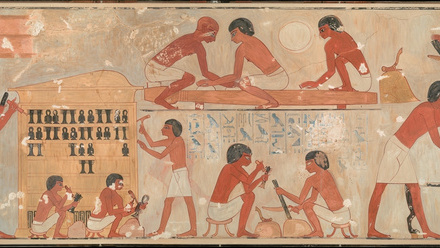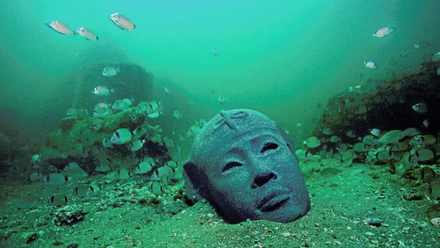The royal crowns of Egypt
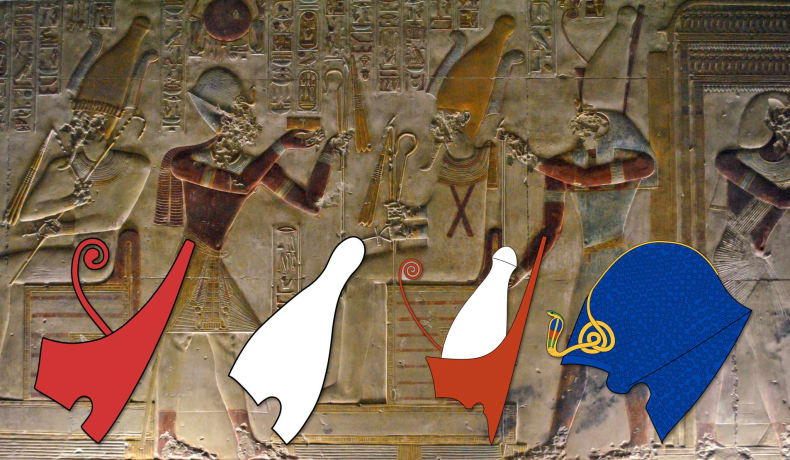
Headdresses were used in Ancient Egypt to communicate power or to identify deities, rulers, and roles within religious ceremonies. You can find crowns in Egyptian artwork and statues, so see if you can find some of these crowns on your next museum trip!
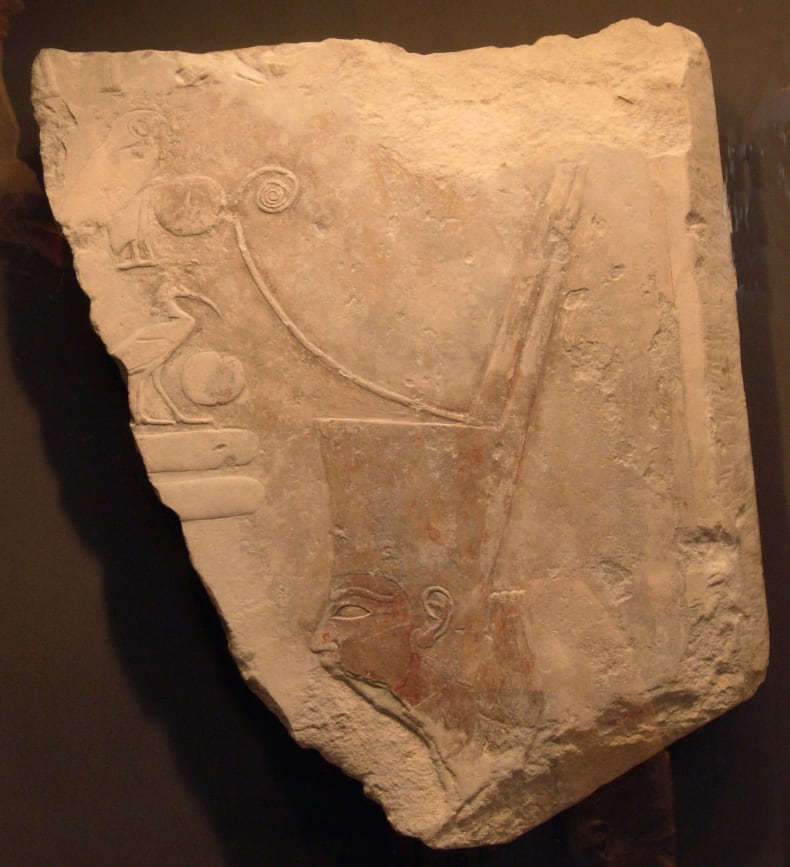
Red crown (Deshret)
This crown was worn by rulers of Lower Egypt – the area around the Nile delta in the north of the country. Sometimes gods and goddesses are shown wearing the Red crown to associate them with the role of the king and the rulers divine right to rule the land of Egypt. Wadjet, the cobra goddess sometimes shown on the forehead of kings, can be depicted wearing the crown in her role as protector of Lower Egypt.
Above: This scene shows Pharaoh Ahmose, first ruler of Egypt’s New Kingdom, and comes from his temple at Abydos excavated by the Egypt Exploration Society in 1906-7. It shows the king wearing the Deshret crown and is now in the Metropolitan Museum, New York (06.1231.34).
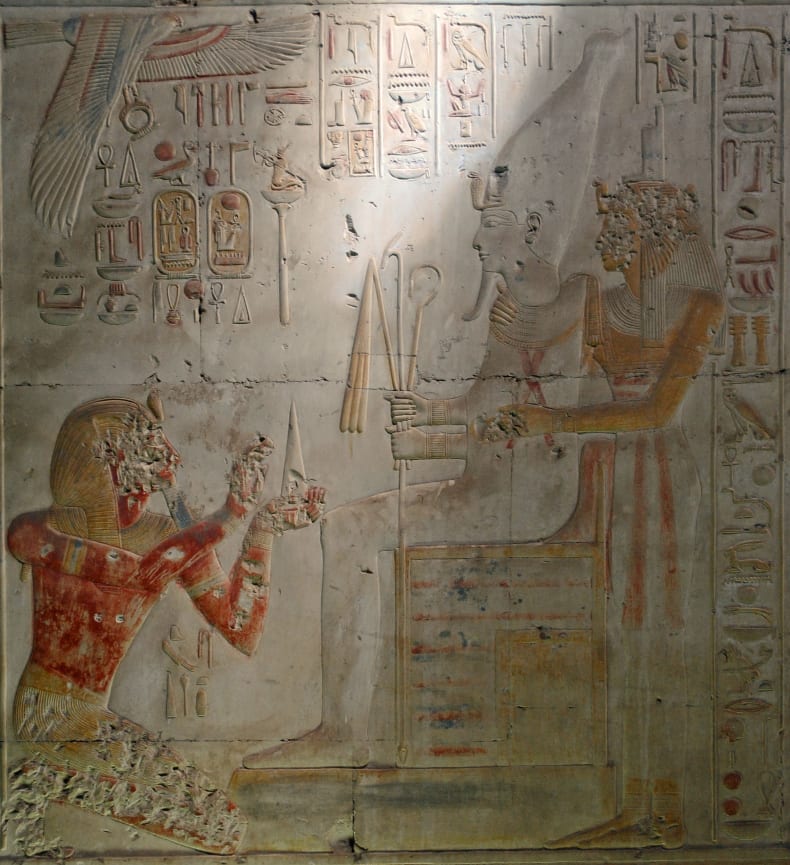
White crown (Hedjet)
The Hedjet was worn by rulers of Upper Egypt – the Nile valley south of Memphis and up to the first cataract near modern Aswan. Nekhbet, the vulture goddess sometimes shown on the forehead of kings, can be depicted wearing the crown in her role as protector of Upper Egypt.
Above: Seti I, wearing the Nemes headdress, kneels before the enthroned Osiris, god of the underworld. Osiris wears the Hedjet crown while his sister-wife, Isis, embraces him. From the temple of Seti I at Abydos.
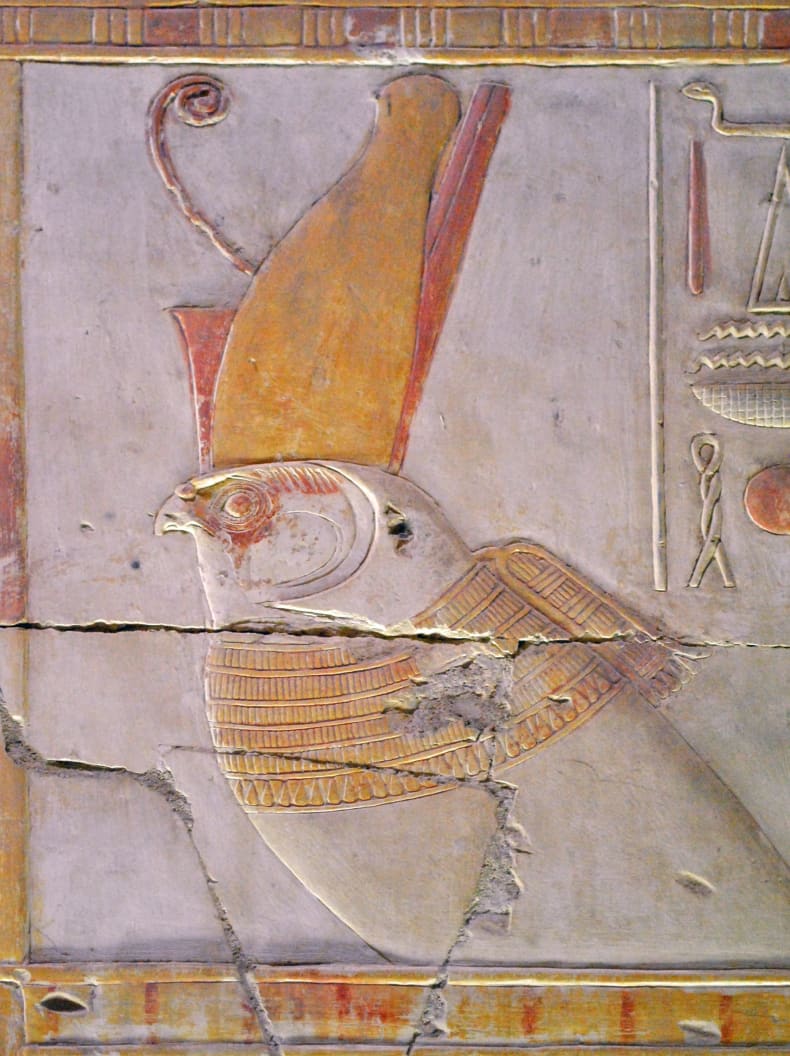
Double crown (Pschent)
This crown is a combination of both the Deshret and Hedjet crowns symbolising the unification of Lower and Upper Egypt under a single ruler. Kings wear the crown to shown their control over all Egypt.
Above: Horus was the Ancient Egyptian god of kingship and is shown here as a falcon wearing the Pschent crown symbolising his divine right to rule Egypt through the Pharaoh. From the temple of Seti I at Abydos.
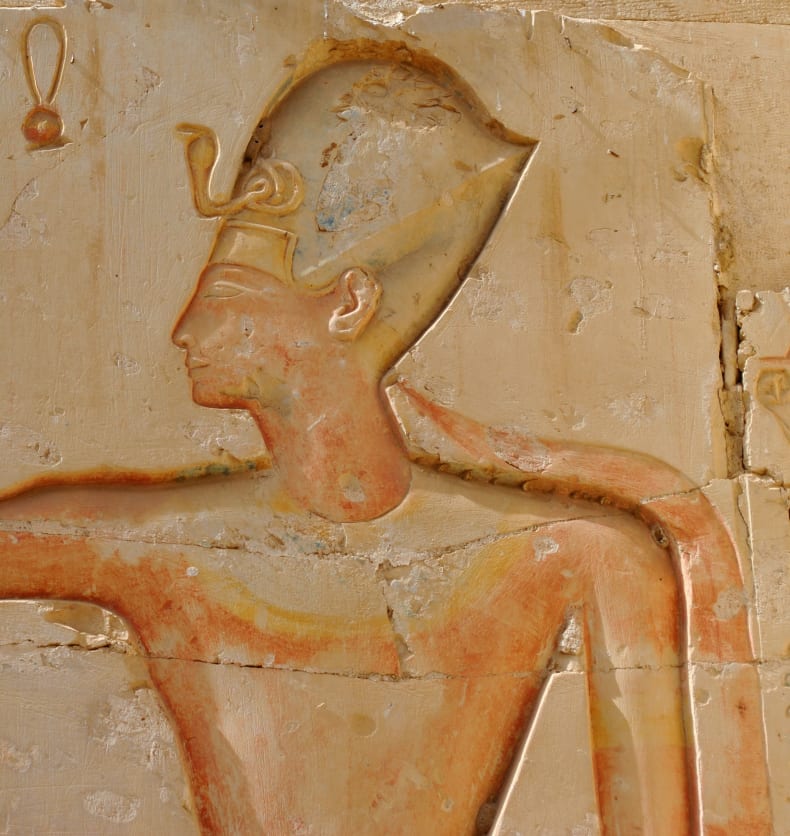
Blue crown (Khepresh)
The Khepresh crown was often worn by pharaohs when going into war and many scenes of battle shown them wearing it. During the later 18th Dynasty of the New Kingdom, many pharaohs adopted the Khepresh as their main crown and it can be seen on statuary of Amenhotep III, Akhenaten, and on the shabti figures of Tutankhamun.
Above: Ramesses II stands tall in his Khepresh crown among scenes of battle in his temple at Abydos.
What were the crowns made from?
No crowns of the pharaohs have been found by archaeologists. This could be because they were passed down from one ruler to the next, or possibly because they were made out of delicate materials. Experts believe that they were probably made from fabric, leather, or woven fibres such as papyrus.
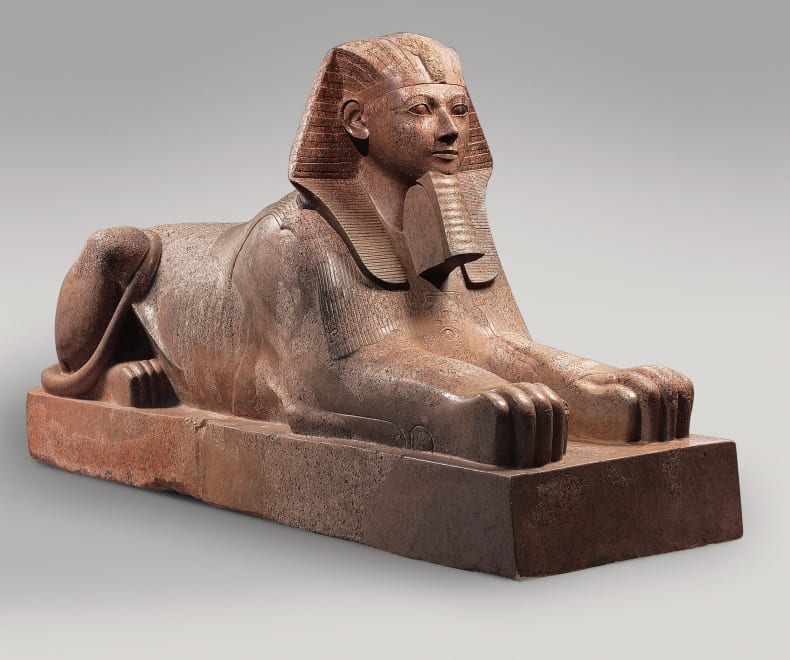
Nemes headdress
The Nemes is not really a crown, but a striped headcloth worn by the rulers of Egypt. The boy king, Tutankhamun, is famously depicted wearing the nemes headdress in his golden mask. Fabric covered the head of the pharaoh and fell down the back while two drapes fell over the shoulders to the front.
Above: Not all Pharaohs were men. Here, the female Pharaoh Hatshepsut wears the nemes headdress and royal beard but is depicted as a sphinx (a human-headed lion)! This example is now in the Metropolitan Museum, New York (31.3.166).
Why not have a go at designing your own nemes headdress by downloading our activity pack here.

